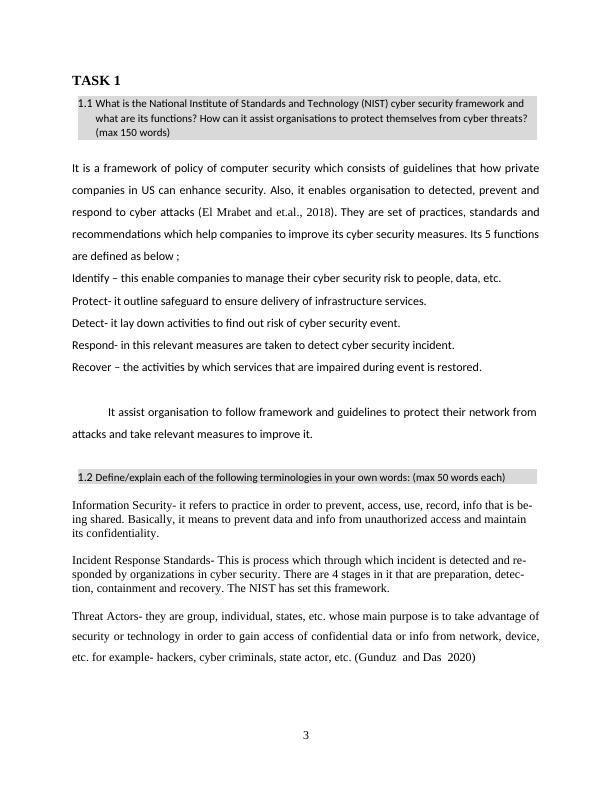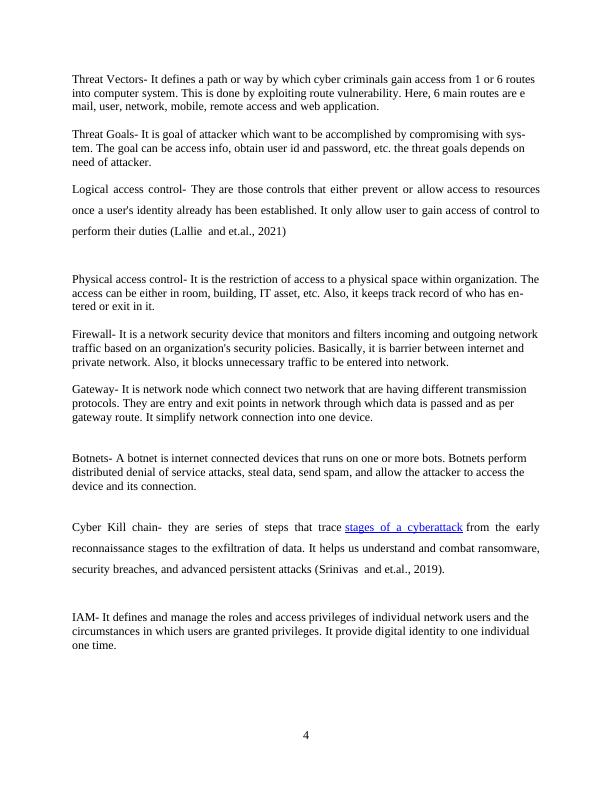National Institute of Standards and Technology (NIST) Cyber Security Framework and Terminologies
Explain the functions of the NIST cyber security framework and how it can assist organizations in protecting themselves from cyber threats.
11 Pages1515 Words26 Views
Added on 2022-12-22
About This Document
This document provides an overview of the National Institute of Standards and Technology (NIST) Cyber Security Framework and explains important terminologies in cyber security. It discusses the functions of the NIST framework and how it can assist organizations in protecting themselves from cyber threats. It also defines and explains terminologies such as information security, incident response standards, threat actors, threat vectors, and more. Additionally, the document explores the importance of having a professional cyber security officer on staff. The content is relevant to the subject of cyber security and is suitable for individuals studying or working in this field.
National Institute of Standards and Technology (NIST) Cyber Security Framework and Terminologies
Explain the functions of the NIST cyber security framework and how it can assist organizations in protecting themselves from cyber threats.
Added on 2022-12-22
ShareRelated Documents
End of preview
Want to access all the pages? Upload your documents or become a member.
Cybersecurity Assignment 2022
|12
|3058
|22
CYBER SECURITY Name: Student Id: Name of univeristy:.
|8
|4621
|39
IT Security Risks and Risk Mitigation Approaches : Report
|7
|2906
|188
IS Security and Risk Management
|12
|3177
|391
Computer Security: Fundamentals, Examples, and Countermeasures
|15
|5240
|98
Computer Security: Protecting Systems and Information
|15
|5076
|58




